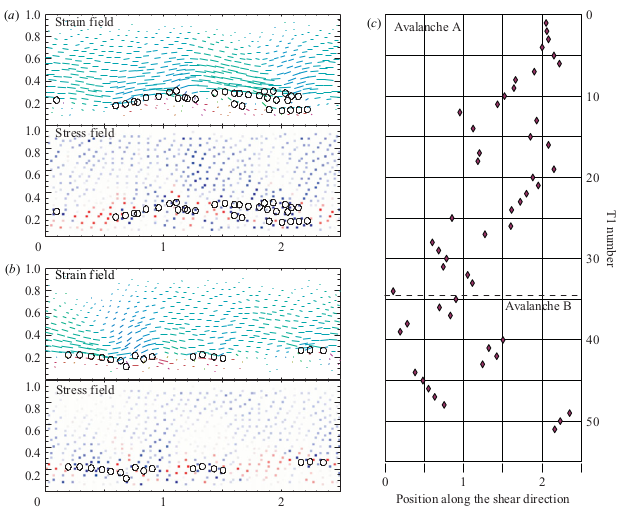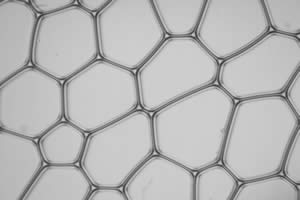
Citation
A. Kabla, J. Scheibert and G. Debregeas
Journal of Fluid Mechanics, 587:45-72 (2007)
Abstract
Abstract
The evolution of a bidimensional foam submitted to continuous quasistatic shearing is investigated both experimentally and numerically. We extract, from the images of the sheared foam, the plastic flow profiles as well as the local statistical properties of the stress field. When the imposed strain becomes larger than the yield strain, the plastic events develop large spatial and temporal correlations, and the plastic flow gets confined to a narrow shear-band. This transition and the steady-state regime of flow are investigated by first focusing on the elastic deformation produced by an elementary plastic event. This allows us to understand (1) the appearance of long-lived spatial heterogeneities of the stress field, which we believe are at the origin of the shear-banding transition, (2) the statistics of the dynamic fluctuations of the stress field induced by plastic rearrangements in steady-state regime.
Figure sample

Description of two consecutive avalanches in the steady-state regime (numerical simulation). For each one, the displacement and stress fields, resulting from the T1 cascade, are displayed. o, location of the T1 events involved in the avalanche. (c) x-coordinate (along the shear band) of the T1 events in chronological order for the two avalanches in (a) and (b). The dashed line indicates the limit between the two avalanches. This graph illustrates that the second avalanche involves T1 events preferentially located in the region that have not plastically yielded previously. Movies showing the complete sequence of these avalanches are available with the online version of the paper.


